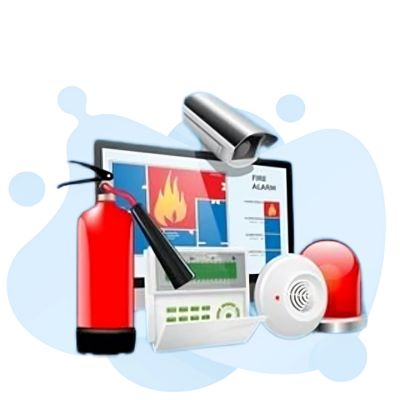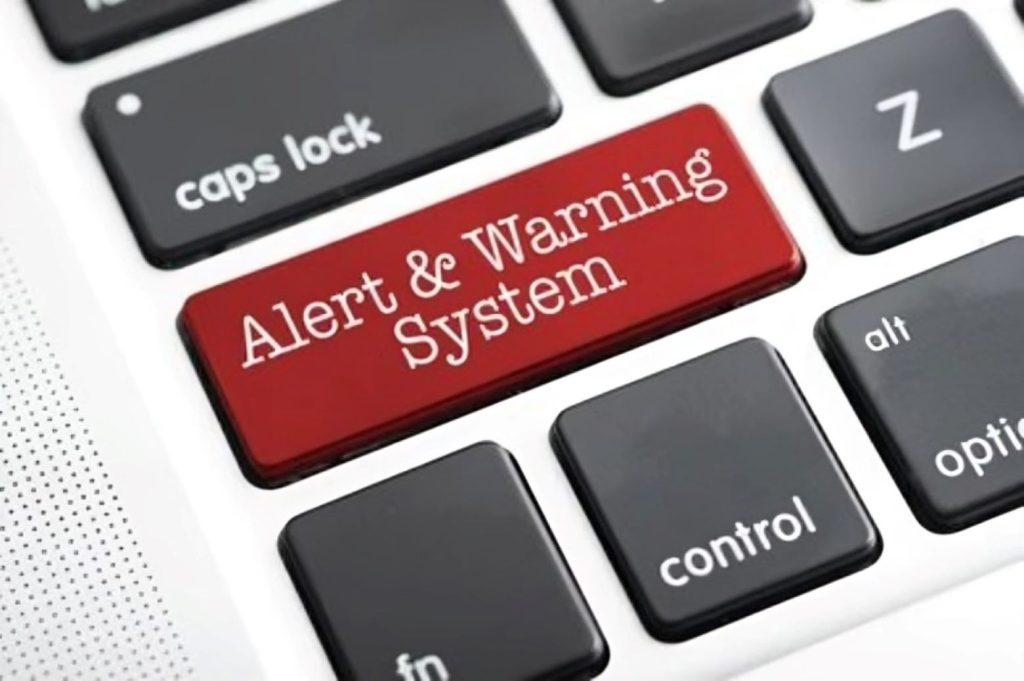EAS (Emergency Alert System) Test | Learn All About It

The Emergency Alert System (EAS) warns the public about emergencies. It lets government officals send important emergency information. This system needs radio and TV stations, cable companies, and more to help the President speak to us quickly if there’s a national emergency.
The EAS is crucial for keeping us safe and informed. It sends out public safety alerts and warning signals when we’re in danger. It’s run by FEMA, FCC, and NOAA. This system works even if the internet is down.
Free EAS Practice Test Online
FREE EAS Fundamentals Questions and Answers
FREE EAS Operations and Regulations Questions and Answers
Key Takeaways
- The EAS is a national public warning system that enables authorities to deliver urgent emergency information to the public.
- FEMA, FCC, and NOAA are responsible for implementing, maintaining, and operating the EAS at the federal level.
- The EAS is designed to function as a redundant, multi-platform alerting system in emergencies.
- Nationwide EAS tests are conducted regularly to assess the system’s readiness and effectiveness.
- EAS Participants, including broadcasters and cable providers, are mandated to participate in these national tests.
Introduction to the Emergency Alert System (EAS)
The Emergency Alert System (EAS) is key for sharing vital emergency info. It includes things like weather alerts and AMBER alerts. State and local authorities use it to tell people fast about crises or threats.
What is the EAS?
The EAS makes sure people hear urgent messages quickly. It involves radio and TV broadcasters, cable TV, and more. They have to let the President speak to all Americans within ten minutes if there’s a big national problem. This doesn’t just happen; they work hard to make sure the system is ready when needed.
Purpose and Importance of the EAS
The EAS is all about spreading emergency alerts when people need them most. Its job is to keep everyone safe by sharing info on natural disasters, acts of terrorism, and other dangers. It’s a big part of how the country gets ready and handles tough situations.
Agencies Involved in the EAS
Many federal groups help keep the EAS emergency alert system working. The Federal Communications Commission (FCC) sets up the rules and checks that things run right. The Federal Emergency Management Agency (FEMA) does big tests and makes sure the system is ready. On top of that, people who need to send alerts use FEMA’s system, called IPAWS.
Can You Pass EAS Test? Try Now FREE

Ultimate Guide For EAS Test
EAS (Emergency Alert System) Test
The EAS tests are nationwide. They check if the system works well without the internet. Thanks to the IPAWS Modernization Act of 2015, FEMA does these tests every three years. This helps make sure the President can alert us all in case of big dangers.
Purpose of the National EAS Test
EAS tests aim to see if the system is ready to share important messages nationally. They check if the setup needs any improvements. The tests make sure the system can quickly and well warn us about dangers like natural disasters or terrorism.
FREE EAS Practice Test – Click Here
Testing Process and Coordination
FEMA, the FCC, and many others work closely to prepare and review these tests. After each test, they make a plan to better the warning system. This teamwork improves alerts for our safety.
Previous National EAS Tests
The latest EAS test was on August 11th, 2025. It was the sixth test. Before that, tests happened in 2011, 2016 and 2017, 2018, and 2019. The 2025 test was about one minute long and was in English and Spanish.
What to Expect During the Test
In the EAS test, expect to see warnings on TV, radio, and your phone. It checks how well we receive and understand alerts. This procedure is vital for keeping us safe.
How the EAS Works
The Emergency Alert System (EAS) helps spread emergency alerts across the US. It lets people know about dangers. These warnings are based on a clear set of rules by the FCC. When a danger is identified at the local, state, or national level, it’s sent through the EAS. This is done by using special equipment. Then, radio and TV stations, and others, broadcast these alerts. This is to make sure everyone can hear and be safe.
EAS Alert Distribution and Rebroadcasting
TV, radio, and other providers keep an ear out for these alerts. They watch the main stations for any news about dangers. When they hear it, they share it again with everyone in their area. This way, the safety news spreads far and wide. Even folks who might not hear the first broadcast can get the message.
Types of Alerts and Emergencies
The EAS can send many types of alerts. From alerts about safety, weather, and missing children to practice drills. A lot of communication methods work together to get these warnings out. With radio, TV, and more on board, the EAS can alert the whole country fast. Everyone can get the news when it’s a test or a real crisis.
EAS Test – Can You Pass?

EAS Test Preparation
Conclusion
The Emergency Alert System (EAS) keeps people safe by letting officials send out important emergency news. Every three years, the Federal Emergency Management Agency (FEMA) tests this system nationwide. They do this to make sure it works well if there’s a real national emergency.
These tests help FEMA, the Federal Communications Commission (FCC), and others find what can be better. They make sure the EAS can quickly send out alerts and warnings to keep us safe. The latest test happened on August 11, 2025. It lasted about a minute. There were previous tests in November 2011, September 2016 and 2017, October 2018, and August 2019.
The aim of these national tests is to see how well the IPAWS Open Platform and the message network work. The EAS system can even send alerts in different languages and with audio files. This makes it even better at its job. States also test the EAS every month to make sure it’s always ready for an emergency.
Take EAS Exam FREE – Start Here
FAQ
What is the Emergency Alert System (EAS)?
The Emergency Alert System (EAS) is a warning system for the whole country. It makes sure that radio, TV, and others can share emergency messages quickly. This is especially important during national emergencies.
What is the purpose of the EAS?
The EAS helps spread the word during emergencies like bad weather or when a child is missing. Its job is to keep people safe by making sure they know about dangers nearby, whether from nature or human actions.
What agencies are involved in the EAS?
The EAS is managed by three key groups: the Federal Emergency Management Agency (FEMA), the Federal Communications Commission (FCC), and the National Weather Service (NWS).
What is the purpose of the national-level EAS test?
These national tests check if the EAS works well across the country. They help make sure people can still get emergency messages even if the internet is down.
How often are national EAS tests conducted?
FEMA has to do a nationwide test of the EAS at least every three years, as stated by the IPAWS Modernization Act of 2015.
What happens during an EAS alert?
EAS alerts use special audio to get people’s attention. It starts when someone in charge of safety at the local or national level sends an alert. Then, certain stations share this message with everyone. After that, more stations rebroadcast it to reach more people.
What types of emergencies trigger an EAS alert?
Many kinds of dangers can activate the EAS, from storms to terrorist threats. Its goal is to get everyone ready and safe.
How can the public prepare for an EAS test or alert?
It’s a good idea for all of us to learn about the EAS. Make sure you can get emergency messages through the news or other local channels. Then, be ready to follow any advice you’re given if an alert comes up.